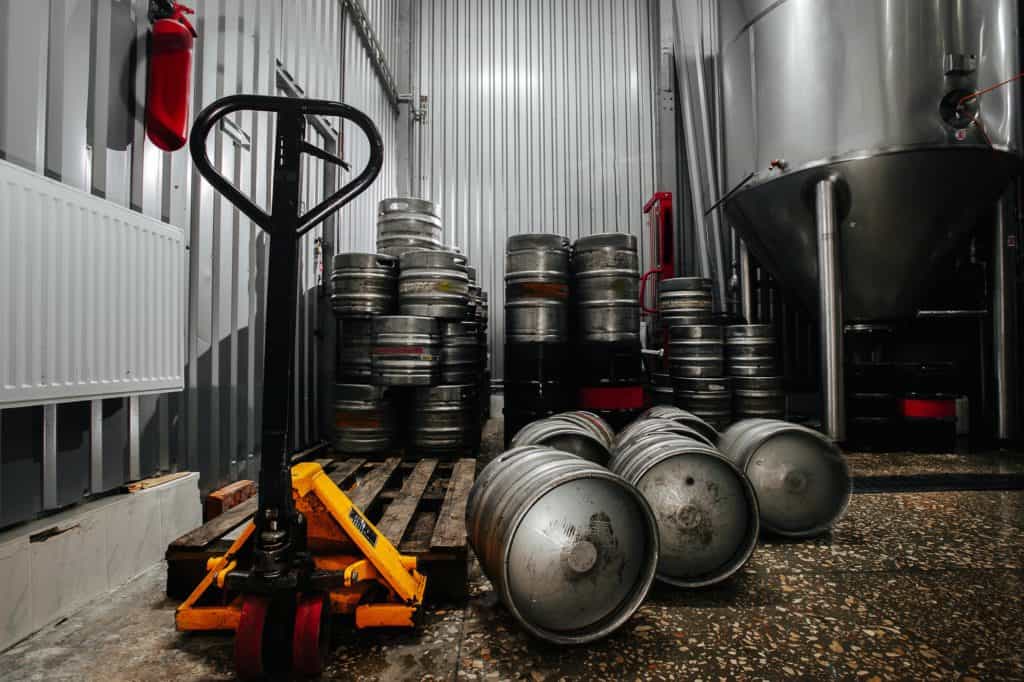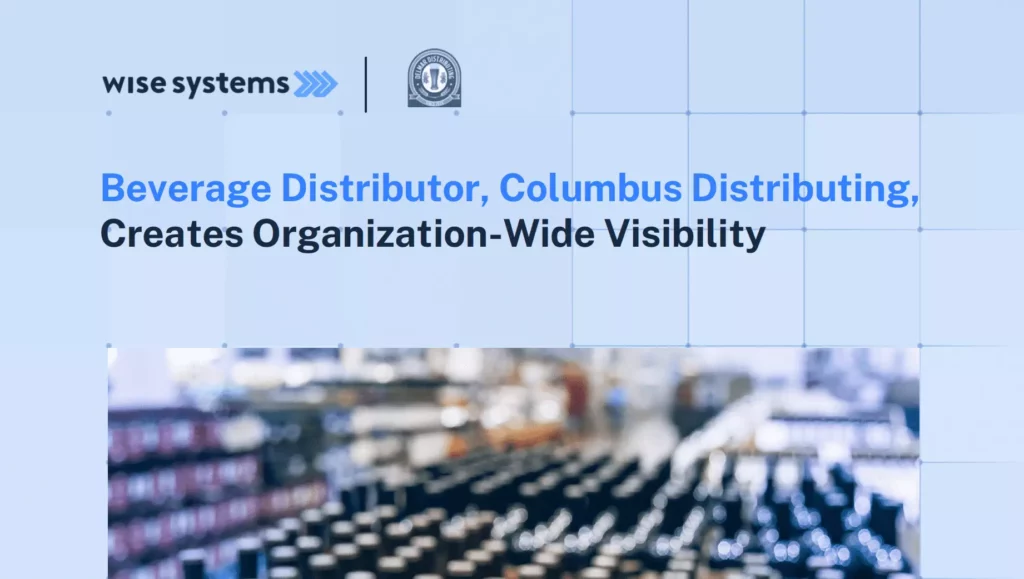Dynamic vs. Static Routing

Wise Systems

There are two main types of routing software: dynamic and static. Both have their own unique benefits and uses, which is why they are popular in different industries.
In this blog post, we will define both types of routing software and explain when you might want to use each one. We will also compare the two and highlight how they differ from each other.
In this article:
- What Is Routing Software Used For?
- What Industries Can Benefit from Using Routing Software?
- What Is Dynamic Routing Software?
- How Does Dynamic Routing Work?
- What Are the Benefits of Using Dynamic Routing Software?
- What Is Static Routing Software?
- How Does Static Routing Work?
- Why Choose Static Instead of Dynamic Routing?
- What is the Difference Between Static and Dynamic Routing?
- Which Type of Routing Software Is Right for Your Business?
- Wise Systems Offers a Variety of Routing Software to Help Grow Your Business
- Frequently Asked Questions
What Is Routing Software Used For?

Routing software is a tool used by businesses to plan and optimize delivery routes. This can be helpful for a business that delivers products or services to customers. The software takes various factors into account, such as traffic patterns, distance, and delivery windows to create the most efficient routes possible.
Routing software helps businesses save time, reduce fuel costs, and improve customer satisfaction by ensuring that deliveries are made in a timely manner. It can also help businesses better manage their fleets and drivers by providing real-time updates and alerts on route changes or delays.
There are many different types of routing software available, ranging from simple route optimization tools to more complex systems that integrate with GPS tracking and customer management software. Some routing software even allows for the optimization of multiple stops, taking into account time constraints and delivery priorities. When used in addition to Product Scheduling or Dispatch software, businesses can automate their entire delivery process from start to finish.
Learn how Wise Systems can transform your route planning and optimization processes. Book a demo today.
What Industries Can Benefit from Using Routing Software?
Used for sales, deliveries, service, maintenance, and more, routing software is popular in many different industries, including:
- Food and beverage delivery
- Package and courier delivery
- Manufacturing
- Retail and wholesale trade
- Transportation and warehousing
Each of these industries has unique routing needs. For example, food and beverage businesses might need to consider things like traffic patterns and the best time of day to deliver. Public transportation systems might need to consider things like the number of stops and the distance between each stop.
Towing and landscaping businesses might need to consider things like the size of the vehicle and the type of terrain. No matter what industry you are in, routing software can help you save time and money by optimizing your delivery routes.
What Is Dynamic Routing Software?
Dynamic routing software is a type of routing software that uses real-time data to plan routes. This means that the software takes into account traffic, weather, and other conditions that could impact the route.
Dynamic routing software is often used by businesses that need to make last-minute changes to their routes. For example, a business that delivers food or groceries may use dynamic routing software to avoid traffic congestion or bad weather.
How Does Dynamic Routing Work?

Dynamic routing optimizes delivery routes in real time based on changing variables such as traffic conditions, weather, or delivery urgency. This technology-driven approach has revolutionized logistics by supporting improved efficiency, cost savings, and increased customer satisfaction.
Delivery addresses are entered into a software system, which then analyzes a multitude of data points, including traffic patterns, road closures, weather conditions, and even customer preferences. Based on this analysis, the software determines the best and most efficient route for drivers to take to reach their destination in the shortest amount of time.
By utilizing advanced routing algorithms and GPS tracking, logistics companies can continuously update routes and adapt to changing circumstances throughout the day, which helps companies ensure that their drivers reach their destinations on time and with minimal delays.
What Are the Benefits of Using Dynamic Routing Software?
There are many benefits of using dynamic routing software, including:
- Improved customer service – By planning efficient routes, businesses can deliver their products or services faster and with fewer delays. This can improve customer satisfaction and loyalty.
- Reduced operational costs – Planning efficient routes helps to optimize driver schedules, reducing operational costs by minimizing fuel consumption and optimizing labor utilization..
- Improved fleet management – By using routing software, businesses can make sure that their vehicles are being used as efficiently as possible. This can include reassigning drivers to different routes, consolidating deliveries, or adjusting schedules to meet changing demands, all of which help to improve operational efficiency and resource utilization..
Book a demo now to discover how you can leverage the benefits of dynamic routing with the Wise Systems delivery automation platform.
What Is Static Routing Software?
Static routing software is a type of routing software that uses fixed data to plan routes. This means that the software does not take into account real-time conditions, such as traffic or weather.
Static routing software is often used by businesses that have predictable delivery schedules. For example, a business that delivers packages on a regular schedule may use static routing software to plan its routes in advance. Static routing software can also be used to plan routes for public transportation systems, such as buses or trains.
How Does Static Routing Work?

In simple terms, static routing involves pre-defining a set route or path for a vehicle to follow from point A to point B, without any changes or deviations along the way. This predetermined route is typically based on factors such as distance, time, traffic conditions, and specific customer preferences.
When planning a delivery or transportation route, logistics managers use historical data and mapping software to determine the most optimal path for a vehicle to take. This includes considering factors like the shortest distance, traffic patterns, road conditions, and other constraints.
Once the optimal route has been identified, logistics managers pre-assign these static routes to specific vehicles or drivers. By following predetermined routes, logistics companies can provide more accurate delivery estimates to customers.
However, static routing does not account for unexpected disruptions and delays that can impact deliveries. While changes can be made after a driver is dispatched, these changes must be made and communicated manually, making it less-efficient than the software-driven dynamic routing approach.
Why Choose Static Instead of Dynamic Routing?
Despite its many advantages, dynamic routing has some disadvantages compared to static routing. Dynamic routing systems require a significant investment in technology and infrastructure, including GPS devices, routing software, and real-time data feeds. This can be cost-prohibitive for smaller operations or those with limited budgets.
Additionally, dynamic routing can introduce complexity into the delivery process. The constant adjustment of routes requires sophisticated software and skilled personnel to manage and interpret the data, which can lead to potential errors or inefficiencies if not properly handled.
These complexities can pose challenges for businesses without the necessary resources or expertise to manage a dynamic routing system effectively. That said, keep in mind that the right dynamic routing software can alleviate these challenges.
Tune in to our latest Feature Spotlight to discover how simplified route visualizations help you make decisions more quickly. Schedule a demo with us today to learn more about Route Planner from Wise Systems here! https://t.co/dMPjyYSEZv pic.twitter.com/AfKpRXJkyq
— Wise Systems (@goWiseSystems) April 10, 2023
Some of the key reasons why businesses might choose static routing over dynamic routing include:
- Predictability – Static routing can be used to plan routes in advance, which can help businesses predict their delivery times.
- Ease of use – Static routing software is often easier to use than dynamic routing software. This is because it does not require real-time data.
- Cost – Static routing software is often less expensive than dynamic routing software.
What is the Difference Between Static and Dynamic Routing?

The main difference between dynamic and static routing software is the type of data that is used to plan routes. Dynamic routing software uses real-time data, while static routing software uses fixed data. This means that dynamic routing software can take into account things like traffic or weather, while static routing software cannot.
Another difference is that dynamic routing software is often used for last-minute changes, while static routing software is often used for predictable schedules. Additionally, if you are running under a tight budget, static routing software may be a better option because it does not require real-time data, which can be costly.
Which Type of Routing Software Is Right for Your Business?
The choice between static and dynamic routing in logistics and delivery operations depends on the nature of the business and its specific requirements. Static routing is better suited for businesses with fixed delivery schedules and consistent destinations, as it’s predictable and easy to manage.
On the other hand, dynamic routing is better for businesses that deal with fluctuating delivery demands and varying routes. Dynamic routing can significantly enhance operational efficiency by optimizing routes in real-time based on current traffic conditions, delivery priorities, and other dynamic factors. For this reason, dynamic routing is often considered superior for complex and variable delivery networks.
Some businesses benefit from using a combination of static and dynamic routing. . For example, you may use dynamic routing software for last-minute changes and static routing software for your regular delivery routes.
Wise Systems Offers a Variety of Routing Software to Help Grow Your Business
Tune in to our latest Feature Spotlight to discover how simplified route visualizations and real-time fleet visibility optimize your last-mile. Schedule a demo with us today to learn more about Dispatcher from Wise Systems here! https://t.co/dMPjyYSEZv pic.twitter.com/u1kpYbKkd6
— Wise Systems (@goWiseSystems) April 17, 2023
Routing software can be a valuable tool for businesses that need to improve their customer service, reduce fuel costs, or improve fleet utilization. Dynamic routing software is a type of routing software that uses real-time data to plan routes, while static routing software is a type of routing software that uses fixed data to plan routes.
The main difference between dynamic and static routing software is the type of data that is used to plan routes. The type of routing software that you use will depend on both the long and short-term needs of your business. Some businesses take a hybrid approach, utilizing both types of routing software to adapt routes during the day based on new orders and conditions drivers are facing in the field.
Wise Systems offers affordable and efficient programs for routing, scheduling, and dispatch software. We work with you to provide a solution that meets the specific needs of your business. For more information about our available programs, please visit our website to request a demo, or give us a call at 857-327-5802.
Frequently Asked Questions
What type of routing is preferred, static or dynamic?
In logistics and delivery operations, the preferred type of routing largely depends on the specific needs and constraints of the operation. Static routing is often preferred in environments with consistent, predictable routes, such as routine deliveries to the same locations, as it allows for simple, easily managed schedules and routes.
However, dynamic routing is generally favored in more complex, variable environments where delivery destinations and schedules frequently change. Dynamic routing leverages real-time data and advanced algorithms to optimize routes on-the-fly, leading to improved efficiency, reduced fuel costs, and better customer service by adapting to traffic conditions, delivery windows, and other variables.
How does each type of routing software adjust (or not adjust) to real-time changes like traffic, weather, or last-minute order changes?
With static routing software, routes are predetermined and stay the same from day to day. Monday routes always include the same sequence of stops, and the same is true for each subsequent day of the week.
Dynamic routing software, on the other hand, builds each day’s orders in order to optimize for service and efficiency. Monday’s route will be based on the orders that need to be delivered that day, and the order will be based on the optimized sequence. Additional orders can be accepted.
How does each type of routing impact the overall efficiency and cost-effectiveness of fleet operations?
Dynamic routing is more complex than static routing because it removes day-to-day predictability. In addition, dynamic routing requires advanced technology to achieve results at scales. However, it can lead to significant cost savings and operational efficiencies through:
- Improved resource utilization – you’re only staffing and managing known orders, rather than running routes that may not actually include the order volume that would justify the investment.
- Allowing on-demand ordering – to create more order flow and flexibility in servicing your customers.
- More efficient routing – the system will build the most efficient stop sequences given the load volume, driver, vehicle and customer constraints.
- Reducing the number of vehicles on the road – because you’ll only run the precise number of vehicles required to support that day’s stops.
- Improved customer satisfaction – with increased flexibility and ordering options (if offered), you can provide better support to existing and new accounts.
Static routing, while simpler to manage, may not offer these same long-term savings, particularly in more complex operational environments.
How easy or difficult is it to switch from static to dynamic routing in an existing operation?
Most operations migrating from static to dynamic routing will take the intermediate step of implementing a static + dynamic hybrid routing strategy. This allows the organization to schedule a certain number of static stops in each day’s routes and then fill in around them with other orders that should be delivered that day.
Wise Systems’ route optimization software makes it easy to migrate from static to dynamic routing in an existing operation. The software supports:
- Static Routing
- Dynamic Routing
- Static + Dynamic Hybrid Routing




